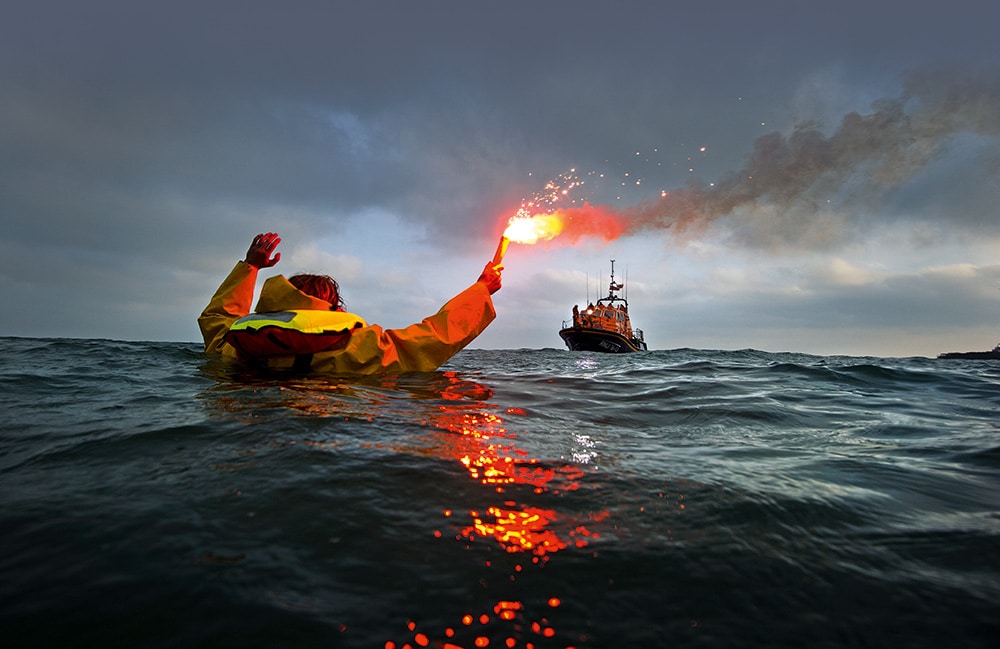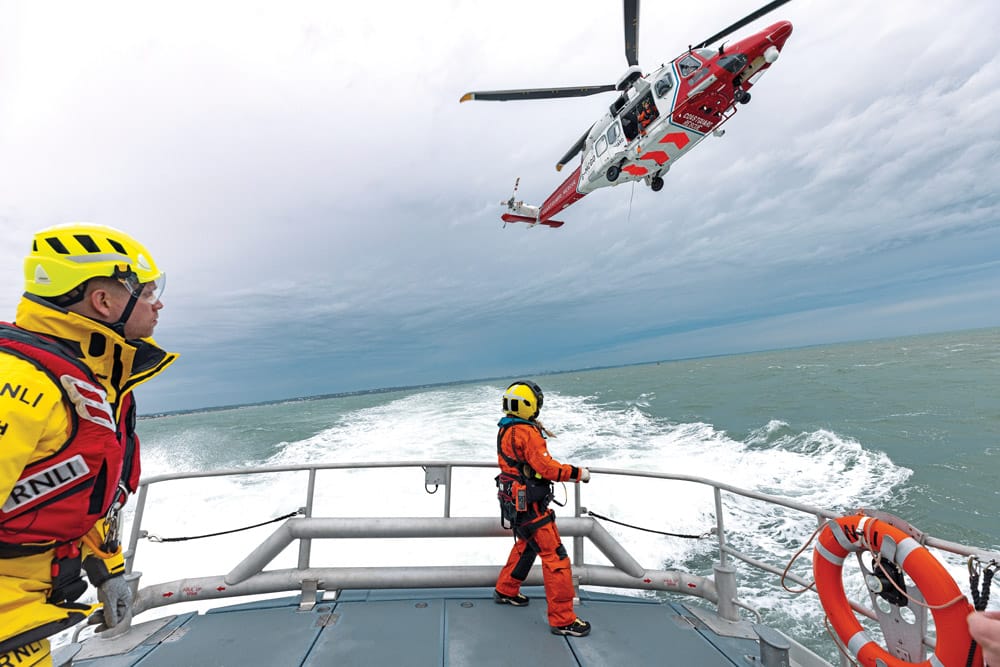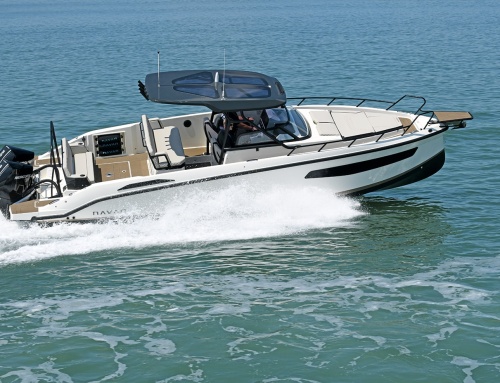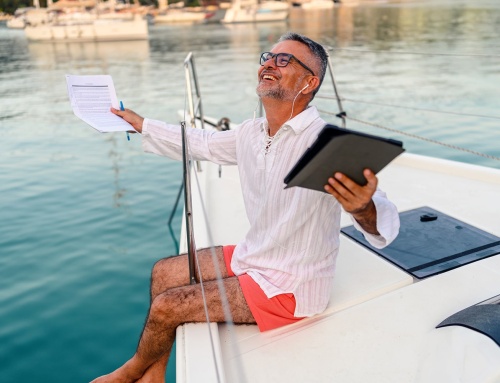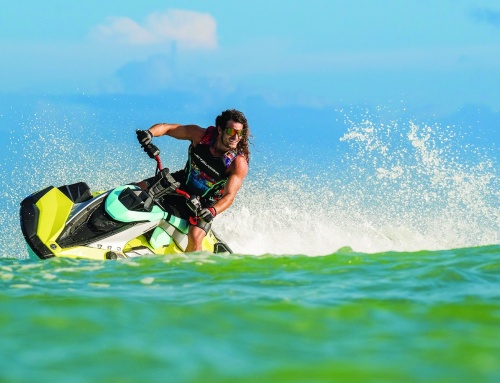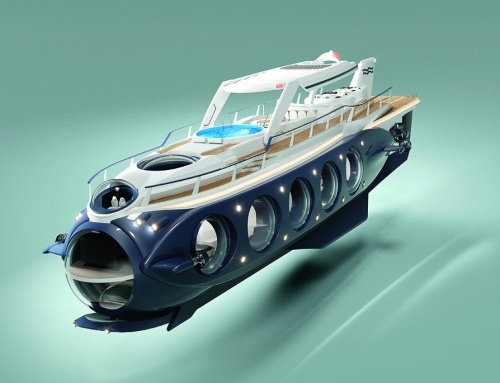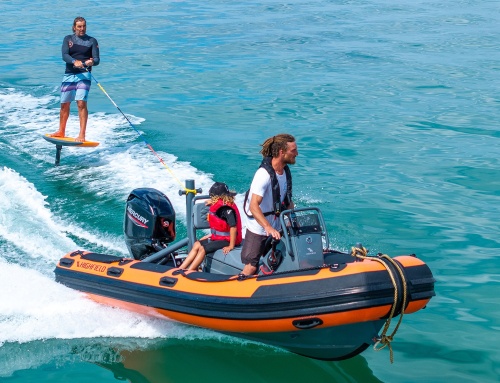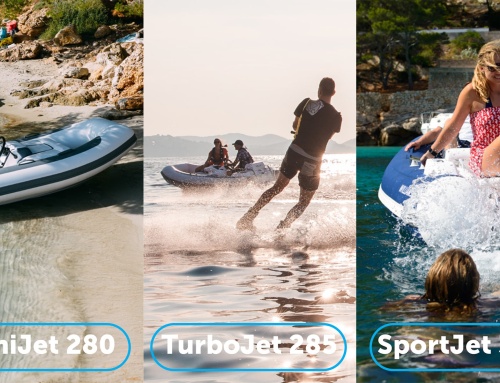In this interview, we ask the RNLI to give us their tried and trusted expert advice on how to prepare for the worst, and, if a worst-case scenario does occur at sea, so let’s get stuck right in with the first question…
Could you assist our readers with some key reminders if ever they needed to make a distress call. What info would the rescue services likely need? And what is the difference between a pan-pan and a Mayday?
If somebody thinks they may need to make a distress call, then that’s exactly what we would recommend doing; far better to initiate a response at an early stage and subsequently downgrade than the other way around. Nobody will receive a reprimand for making a genuine or honest error of judgement here.
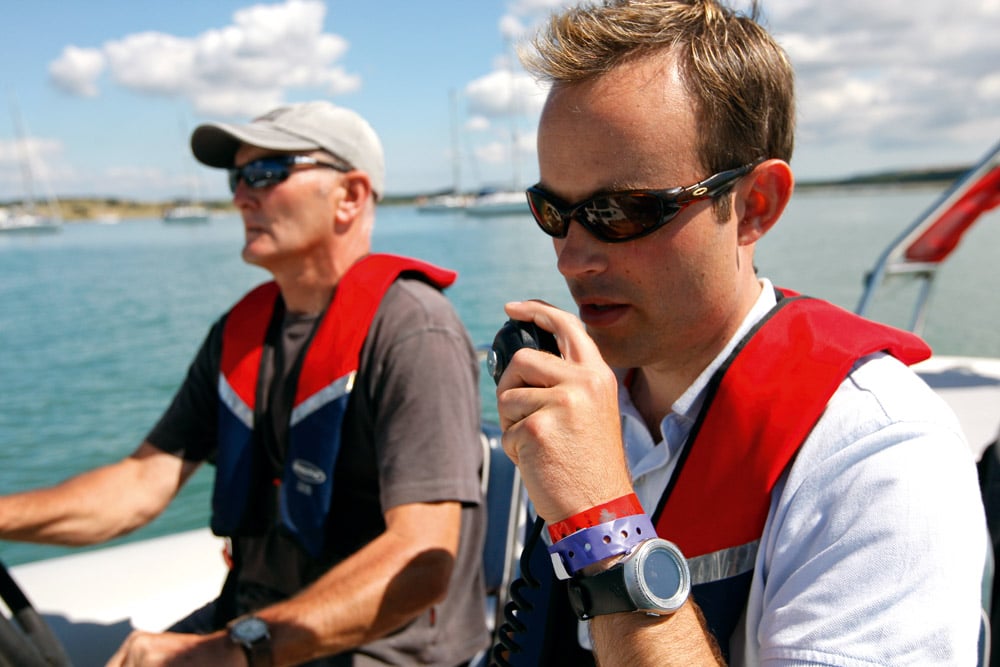
Make sure you know how to make a distress call – Courtesy: RYA.
In terms of the information that should be conveyed for the use of the emergency services, the correct form for a distress (Mayday) transmission covers it all – and, importantly, in the priority order. Anybody putting to sea on any form of craft should have a VHF radio and know how to use it (and be appropriately licensed) – in particular, they should know how to send, and practise, a distress transmission. We use the mnemonic MIRPDANIO, which stands for:
- M – ‘Mayday, Mayday, Mayday’.
- I – ‘This is Me, Me, Me’ (substitute ‘Me’ for your identification using the vessel name or call sign).
- R – Repeat ‘Mayday, this is me’.
- P – Position (give your position with the most readily available and accurate means that you have. It is essential that the position is given at this early stage; it’s the most important piece of information).
- D – Nature of your distress (e.g. ‘I am sinking’, ‘I am on fire’, ‘I am being attacked by pirates, etc.’
- A – Assistance: ‘Immediate assistance is required’.
- N – Number of people on board or involved, e.g. ‘We have six persons on board, three adults and three children. Two of the children have mobility problems’.
- I – Any other information, e.g. ‘We are preparing the life raft’.
- O – Over. ‘This is the end of this transmission and I’m awaiting a response.’
The difference between ‘Mayday’ and ‘pan-pan’ is that ‘Mayday’ is used for occasions when life is in grave and imminent danger and ‘pan-pan’ is for conveying a message that is very urgent. For example, a boat that has lost engine power and is drifting in an area of traffic may well opt to make this a ‘pan-pan’ transmission to let vessels in the area know of the problem and that they should keep an extra vigilant lookout. There’s a level of risk but there isn’t any grave and imminent threat to life. The same scenario, though, with a boat with engine failure but in heavy weather, drifting and close to a rocky ‘lee shore’ (a piece of shore with the wind blowing in from the sea, that is, on the leeward side of the boat) should probably be a Mayday call.
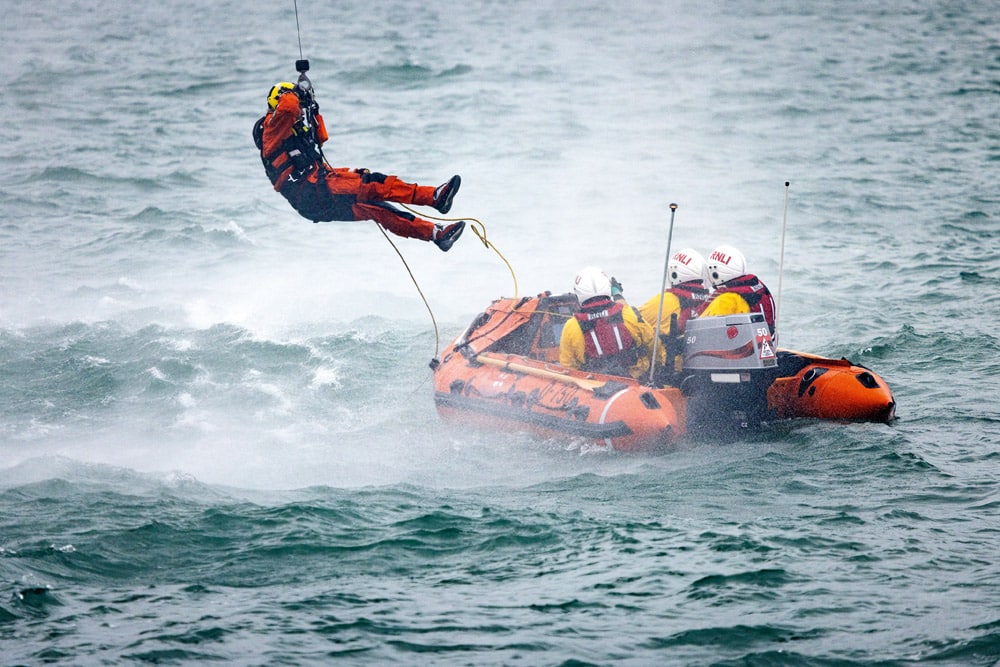
Relief D-class inshore lifeboat Yeoman of the Guard D-750 undertaking a training exercising with HM Coastguard helicopter for the RNLI working with helicopters film.
Can you give some direction on what RNLI crews require of a craft needing a tow? What is expected of the crew? How should they prepare? Any helpful dos and don’ts?
A boat that merely requires a tow should, as the first option, seek a commercial organisation that can either provide ‘at sea’ mechanical assistance or commercial towing contracts. Only after a set of conditions have been assessed and a decision has been made about the suitability of towing as the most appropriate method to save life or to prevent deterioration of the situation will a tow be considered. That said, it’s always advisable for the skipper of any vessel to consider the arrangements for being towed and to practise any sort of set-up.
A review of strong points should be undertaken too. For example, are there any appropriate bollards, cleats or eyes that will take the weight of the vessel being towed? And are there good (fair) leads for lines and ropes? Nobody should be out on a boat without a basic repertoire of knots, and the ones that I’d recommend learning and practising as a priority would include:
- Round turn and two half hitches
- Figure-eight knot
- Rolling hitch
- Sheet bend
- Bowline
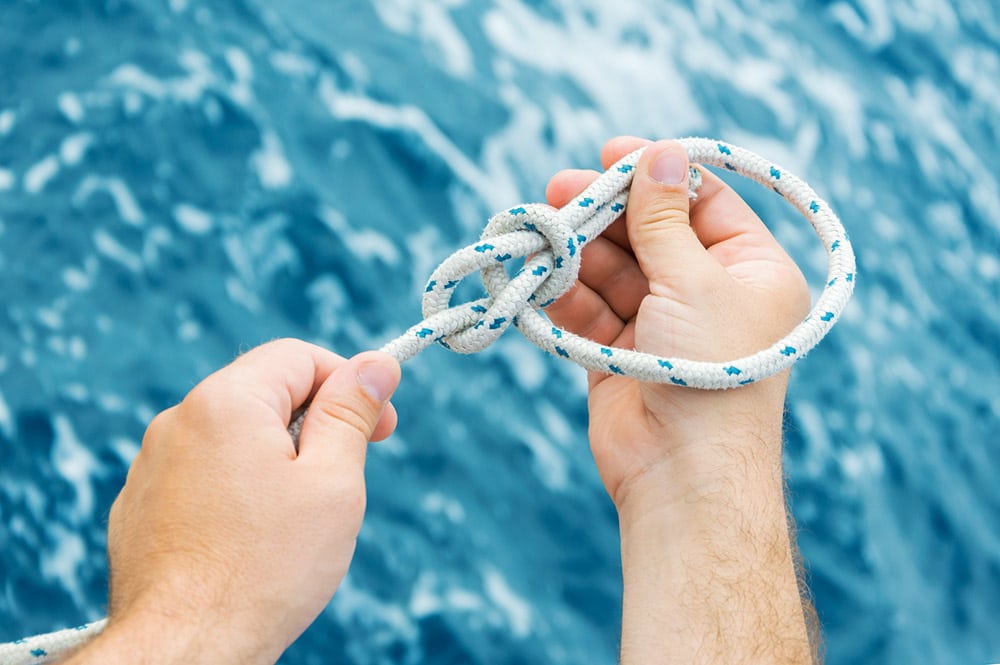
Suggestions on useful knots to learn. © Carol Anne/istockphoto.com
In the heat of the moment, basic skills such as knot tying can evaporate, but it can make a huge difference to how smoothly the operation will go if casualties have these simple capabilities. Might you need to spread the load of a tow between two strong points? A simple bridle can be improvised easily if you know how to use cleats and can tie a rolling hitch without hesitation.
Again, though it really shouldn’t need to be said, safety is paramount. Life jackets should be worn as a default – but particularly when working on a deck and receiving and securing a tow. It’s so easy for lines under load to catch limbs and digits, and this can cause serious injury or worse. Organisation, awareness and discipline must be exercised at all times when involved in an operation such as a tow.
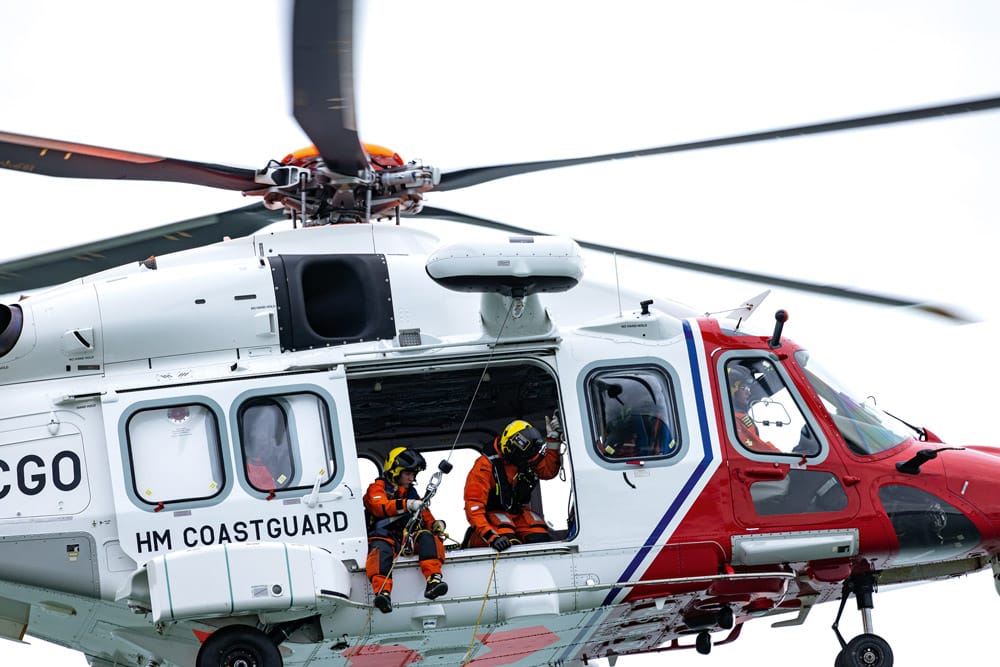
HM Coastguard helicopter training wth RNLI lifeboats for the RNLI working with helicopters film.
In the case of a serious injury or a vessel becoming stricken, if a crewmember needed to be airlifted, what might be expected of them and what points would you consider useful for our readers to know?
For operations that may involve a helicopter, our simple recommendation is that the crew of the casualty vessel follow the instructions from the helicopter crew. It is worth getting clarity and confirmation of any plans before the helicopter is overhead as the noise can make communication very difficult. Don’t be afraid to ask for repeats of instructions several times – rather that than a misunderstanding over the plan.
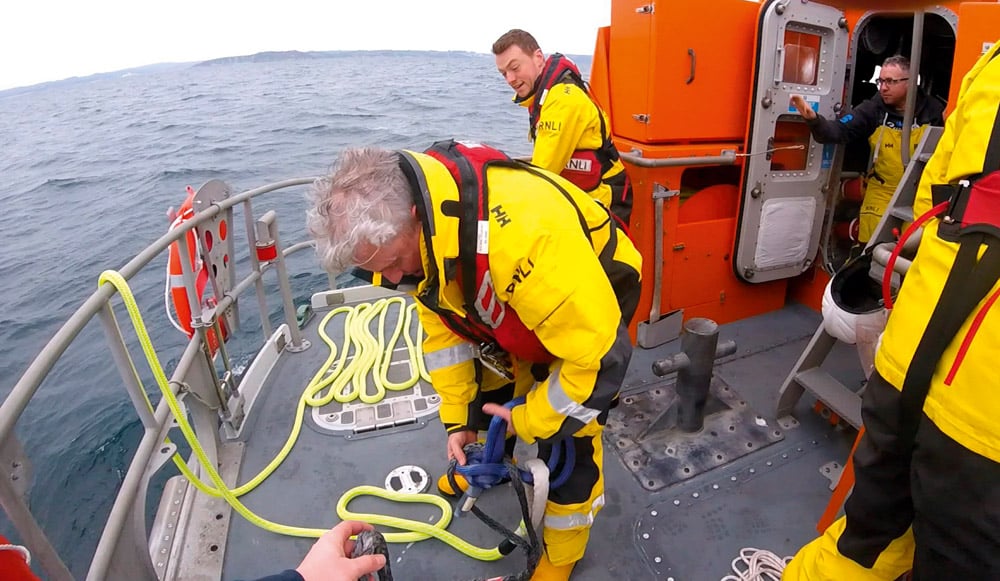
Tying the bowline onto the bridle – A recent tow for Fowey lifeboat
It should really go without saying, but helicopters and pyrotechnic rockets don’t mix well, so don’t, under any circumstance, fire a distress flare rocket when a helicopter is within sight. Having said that, helicopter pilots sometimes appreciate the wind direction and strength indication that can be gleaned from the smoke of a smoke flare.
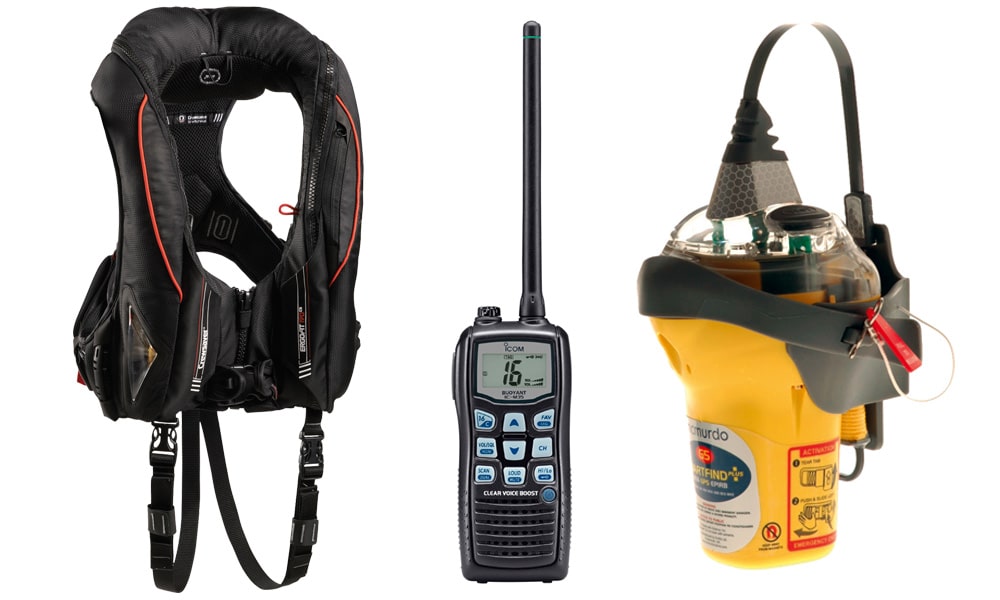
Check life jackets and VHF radios and always carry an EPIRB when going offshore.
Another strong ‘don’t’, which is for your benefit rather than that of the helicopter, is don’t touch anything that comes down on the winch without prior instruction. A huge amount of static electricity builds up with a helicopter in flight, which will then discharge through the first thing touched; this might be the winch person or just the end of the winch wire. The winch will dangle an ‘earthing cable’, which needs to ‘ground’ the aircraft. You don’t want the ‘grounding’ to occur through yourself, as static discharge from a helicopter can routinely exceed 10,000 volts.
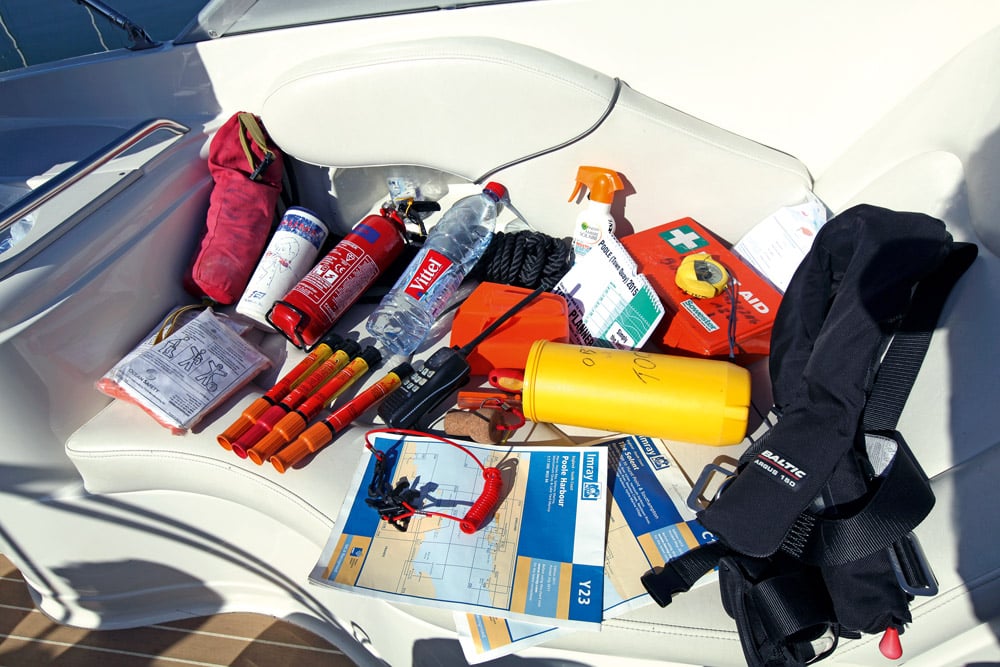
Essential kit (remember to check your flare dates!) – Courtesy: Paul Glatzel.
What safety equipment do the RNLI recommend a boat owner should carry aboard their vessel that could assist in a rescue/emergency situation?
This really depends on the type of planned activity and length of passage. The level of ‘self-sufficiency’ required is a function of the distance/time away from support.
For usual coastal sports boat or RIB use, we would recommend the following:
- An anchor with appropriate/sufficient warp.
- A radar reflector or target enhancer.
- Appropriate nav lights and shapes.
- A method of sounding your sound signals.
- A ‘thought through’ method and associated equipment for recovering someone from the water.
- A form of emergency steering.
- Kill cords (plus spares).
- An alternative means of propulsion or of starting after power failure.
- An appropriate tool kit.
- Appropriate engine spares.
- Suitable personal flotation devices for all on board.
- A form of bailing arrangement (manual pump, bailer or bucket).
- Non-electronic navigation aids.
- A guide to emergency signals.
- A compass.
- A VHF radio.
- A torch.
- In-date distress flares that are appropriate for the activity.
- Suitable fire extinguishers.
- A temporary hull repair kit, include plugs and bungs and/or plastic sheet or tarp for serious hull damage.
- A first-aid kit.
- Some additional mooring or general-purpose lines.
- A throwable, floating rescue line or throw bag.
- An echo/depth sounder.
- A GPS receiver.
- Binoculars.
- Protective warm clothing or thermal protective aid.
- A knife.
- Additional emergency repair materials (cable ties, tape, string.
Pre-planning and preparation is key. A thorough check of the engine and all the systems should be undertaken prior to any trip, and an appropriate trip/passage plan should be put together.
